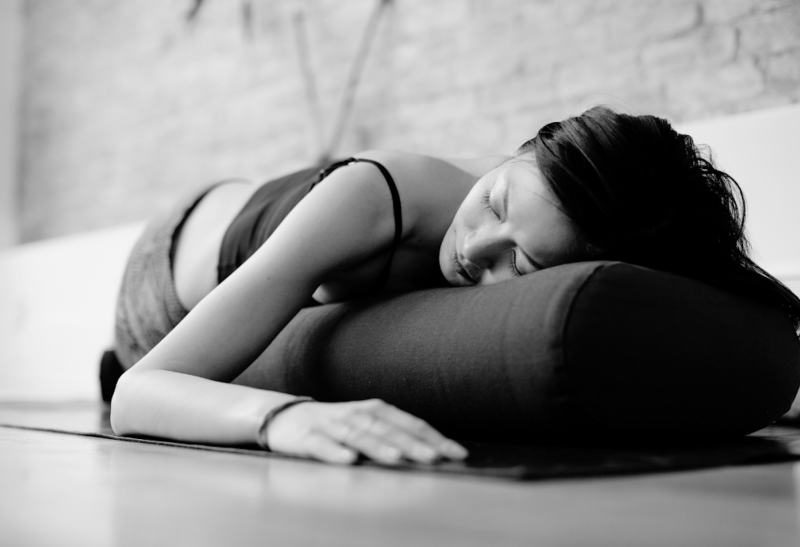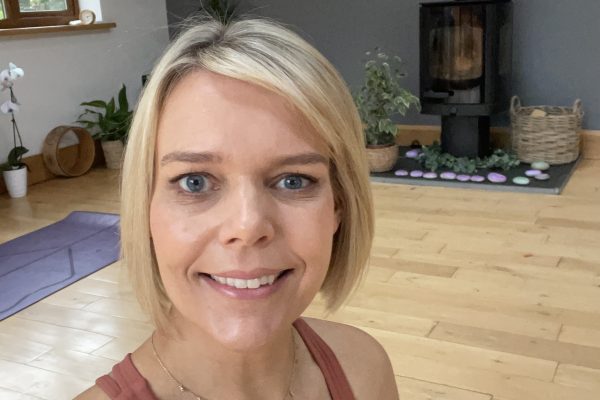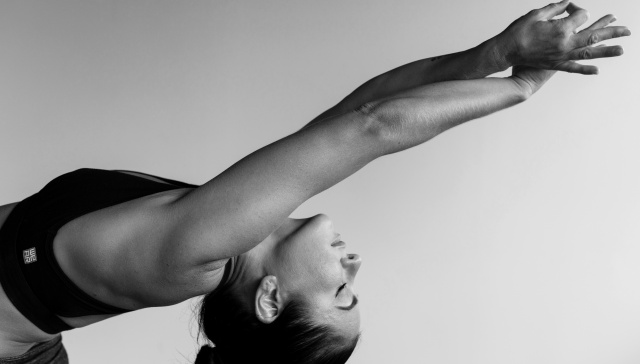Somatic Yoga

Origins of Somatic Yoga
Somatic yoga is a modern form of yoga that combines traditional yogic practices with somatic movement and therapeutic principles.
The term somatic is used in movement therapy and is based on the soma, or "the body as perceived from within"
It was first developed in the late 20th century by Eleanor Criswell Hanna, who started practising meditation yoga in the early 60's ahead of her times via the book "Fundamentals of Yoga by Rammurti Mishra". She went onto a career in psychology, practising hatha yoga and raja yoga and married first psychologist-psychiatrist, Frank Criswell, and later Thomas Hanna, chair of the philosophy department in Florida.
To create Somatic Yoga, she combined her knowledge of traditional Hatha yoga and Raja yoga (a yoga type closed to Ashtanga Yoga) with elements of somatic psychology, focusing on body awareness and mind-body connection.
The philosophy behind somatic yoga is centered around the concept of embodied intelligence - using our body's innate wisdom to guide our movements and actions.
Eleanor Criswell, EdD, was emeritus professor of psychology and former chair of the psychology department at Sonoma State University. Founding director of the Humanistic Psychology Institute, and president of the International Association of Yoga Therapists among many other commitments. She passed away in September 2024.
She published her book "How Yoga Works: An Introduction to Somatic Yoga" in 1989.
What to Expect in a Class
Somatic yoga classes typically involve slow, mindful movements and poses that focus on internal sensations rather than external alignment. The practice encourages students to listen to their bodies and adjust the poses accordingly, rather than forcing themselves into a rigid structure. Classes may also include elements of breathwork, meditation, and relaxation techniques.
Somatic yoga classes generally start with the student lying on a mat and alternating between lying on their back, side and stomach depending on the movement. The teacher will verbally teach the movement, rather than demonstrate, to encourage the internal learning process. Closing your eyes is encouraged to help students engage their internal sensations rather than copying someone else’s movements or looking around the room.
Classes are highly relaxing, slow-paced and gentle, with a focus on self-care and self-empowerment. Some of the movements are completely passive, giving both you and the teacher a sense of your muscular tension, range of motion and movement patterns, as well as to relax the nervous system.
Other exercises are slightly more active, but still require a great deal of mental focus to effectively release muscular contraction and help the student unlearn negative patterns and learn more efficient ones. The classes are designed to increase the student’s sensory awareness, and to equip them with the tools they need to start self-teaching and self-maintaining out of class.
Is Somatic Yoga the same as Yin Yoga?
If somatic yoga and yin yoga might look alike (most poses lying down on the mat and slow paced practise), the experience is very different. In Yin yoga, you relax muscles by stretching them and holding the poses for a long time, while in somatic yoga you make gentle movements to get your body relaxed and pain-free. The poses might be the same but the approach is different.
Who is Somatic yoga for?
Somatic yoga is a low-level workout practice that can be beneficial for people who are not very fit and don't exercise at all. As most poses will be lying on the mat, you don't need to worry about balance or inversions, which makes it an ideal type of yoga to start whatever conditions you might have.
Anyone can practise somatic yoga, whatever their ability. If you are recovering from injury, have an intense exercise routine, or just want to improve your mobility and range of motion, then a somatic yoga class could be exactly what you’re looking for.
How do you become a Somatic Yoga teacher?
Becoming a somatic yoga teacher involves taking a teacher training that explores the work of Eleanor Criswell Hanna, Thomas Hanna, Bonnie Bainbridge Cohen, Moshe Feldenkrais, Emilie Conrad and other somatic pioneers whose modalities emphasise the internal physical perception and experience, as well as bringing in influence from anatomy, Daoist practices, trauma, and more.
The more theoretical side should explore topics such as fascia, the vagus nerve, trauma therapy, posture, interoception and the nervous system, as well as somatic teaching skills. A good training will also teach you the subtle art of using language to help others move in and meet themselves where they are, with grace and compassion.
Meaning of Somatic
Soma comes from a Greek word meaning “Living Body”, or the consciousness of our living body, experienced and regulated from within. The term “somatics” was coined by Thomas Hanna in 1977, author of the book, “Somatics: reawakening the mind’s control of movement, flexibility, and health”. Hanna described somatics as meaning “the body as perceived from the first-person within”, and went on to develop a deeply experiential practice. The practice was designed to wake up the innate senses and shine a light on unconscious neurological patterning and habits – from how you breathe and move, to how you behave.
“The human body is not an instrument to be used, but a realm of one's being to be experienced, explored, enriched and, thereby, educated.” – Thomas Hanna
This concept of somatics introduced an exciting new approach of looking at the body, which had prior been analysed or diagnosed from a rigid scientific approach, based on external rather than internal perception. Hanna described a somatic culture as a culture that encourages sensing, arguing that a culture devoid of this would encourage humans to become reliant on external factors to tell them how they feel, rather than relying on their own senses.
He talked about proprioception, also known as kinesthesia, as the body’s ability to sense movement, action, and location. If a culture doesn’t encourage proprioception, as he argued contemporary culture fails at, then we start to lose our mind-body connection. The key, Hanna said, is to become conscious about the changes our body is going through, such as trauma, stress, ageing or injury, and understand how to manage it.
Over the early 20th Century, the somatic approach began to spread across different movement forms, spanning disciplines from dance to rehabilitation. Pioneers started to focus on injury recovery, and the development of sensory and physical awareness to facilitate self-knowledge and greater self-understanding, until a new somatic style of yoga was born.
A trauma-informed practice
Somatic yoga is movement that works with the nervous system, using techniques that are designed to reeducate and strengthen the body’s brain-to-muscle memory.
Recognising and managing when the body is experiencing pain is an important part of somatic yoga, with classes designed to empower and diminish fear around movement caused by trauma or injury.
In this way, somatic yoga is a trauma-informed practice that integrates both the body and the mind, helping the student work through any mental barriers that might be holding them back.
The term somatic has become a bit of a buzzword in the health and wellness industry, and due to its generic definition, can be used to describe a variety of forms of movement and healing modalities. You may have heard of somatic exercises, somatic movements, somatic psychology, somatic therapy, or somatic dance therapy.
Essentially, somatic movement is always performed very slowly in order to maintain form and control, and prevent reinforcing existing learned patterns. Yoga, qigong, tai chi, and meditation can all be considered somatic exercises, yoga can really help alleviate chronic pain with the work on the fascias and joints that.
Classes include many of the common yoga postures and breathing techniques, but weave in somatic exercises. Each verbal cue or question asked by the teacher is designed to invite the student to get curious about their own experience. For example, the teacher might invite you to ask, “Are you comfortable in this position?”, and if not, “How can you self-adjust in a way that brings more support?”
A somatic yoga practice encourages the student to become an explorer in their own body, to enter into a conversation with themself and the world, and to develop self-enquiry and self-compassion. And in this, the practice becomes a deeply transformative and engaged one.
Classes are often taught using props such as bolsters and blocks, to encourage self-adjustment and manage working with any injuries. Somatic yoga could be likened to yin yoga, and in a way, yin yoga falls under somatics movement therapy, as it too is designed to re-educate the way our brain senses and moves the muscles.
Somatic yoga is also very similar to Scaravelli yoga, which uses vivid metaphors and visualisations to encourage intelligent physical and emotional self-enquiry.
Somatic Yoga for Older People
Somatic Yoga is particularly useful for older people as it provides a way of working with the body which is gentle, adaptable and respectful of individual needs. Unhelpful habits, which can be energy-consuming, are gradually dismantled so that movement becomes more effortless and more efficient.
As our Somatic Yoga teacher Laura Marchetti puts it:
"Somatic yoga allows older students to achieve maximum results with minimum effort and to address imbalances which could be causing tension, pain and discomfort. Also, areas of the body which are underused are revitalised, strengthened and mobilised not through forcing or imposition, but through a refining of our internal awareness which can intuitively access the body’s natural capacity to heal."
Further reading
How Yoga Works: An Introduction to Somatic Yoga, Eleanor Criswell Hanna
Transcript, Shrinkrapradio : #320 - Frontiers in Somatic Therapy with Eleanor Criswell, EdD
In conversation with Thomas Hanna, Ph.D. by Helmut Milz, M.D.
Our Somatic Yoga teachers

Joanna Roffey

 Live Yoga Teachers
Live Yoga Teachers
